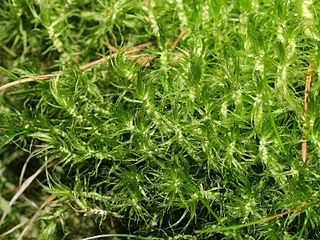This article is an orphan, as no other articles link to it . Please introduce links to this page from related articles ; try the Find link tool for suggestions. (April 2022) |
| Pylaisia | |
|---|---|
| Scientific classification | |
| Kingdom: | Plantae |
| Division: | Bryophyta |
| Class: | Bryopsida |
| Subclass: | Bryidae |
| Order: | Hypnales |
| Family: | Pylaisiaceae |
| Genus: | Pylaisia Bruch & Schimp. |
Pylaisia is a genus of mosses belonging to the family Pylaisiaceae.
The genus has cosmopolitan distribution. [1]
- Pylaisia alpicola (Lindb. ex Lindb. & Arnell) Limpr.
- Pylaisia appressifolia Thér. & Dixon
- Pylaisia australis Dixon & Sainsbury
- Pylaisia bollei De Not.
- Pylaisia brevirostris (Griff.) A. Jaeger
- Pylaisia brotheri Besch.
- Pylaisia buckii T.Y. Chiang & Lin, Chi-Yung
- Pylaisia camurifolia (Mitt.) A. Jaeger
- Pylaisia capillacea (Griff.) A. Jaeger
- Pylaisia chrysea (Schwägr.) Venturi & Bott.
- Pylaisia complanatula Müll. Hal.
- Pylaisia condensata (Mitt.) A. Jaeger
- Pylaisia coreana Nog.
- Pylaisia coreensis (Cardot) Toyama
- Pylaisia cristata Cardot
- Pylaisia curviramea Dixon
- Pylaisia decolor (Mitt.) A. Jaeger
- Pylaisia erectiuscula (Sull. & Lesq.) Mitt.
- Pylaisia extenta (Mitt.) A. Jaeger
- Pylaisia falcata Schimp.
- Pylaisia frahmii (W.R. Buck) Ochyra
- Pylaisia hamata (Mitt.) Cardot
- Pylaisia homomalla (Hampe) A. Jaeger
- Pylaisia intricata (Hedw.) Schimp.
- Pylaisia kunisawae (Ando) Ochyra
- Pylaisia latifolia Dixon
- Pylaisia leptoclada Renauld & Cardot
- Pylaisia levieri (Müll. Hal.) T. Arikawa
- Pylaisia macrotis Cardot
- Pylaisia nana Mitt.
- Pylaisia obtusa Lindb.
- Pylaisia plagiangia Müll. Hal.
- Pylaisia polyantha (Hedw.) Schimp.
- Pylaisia pseudoplatygyrium Kindb.
- Pylaisia robusta Broth. & Paris
- Pylaisia rufescens (Dicks. ex Brid.) De Not.
- Pylaisia selwynii Kindb.
- Pylaisia sericea De Not.
- Pylaisia simlaensis (Mitt.) A. Jaeger
- Pylaisia steerei (Ando & Higuchi) Ignatov
- Pylaisia subcircinata Cardot
- Pylaisia subdenticulata Schimp.
- Pylaisia subhomomalla (Müll. Hal.) A. Jaeger
- Pylaisia subimbricata Broth. & Paris
- Pylaisia tenuirostris (Bruch & Schimp. ex Sull.) A. Jaeger
















